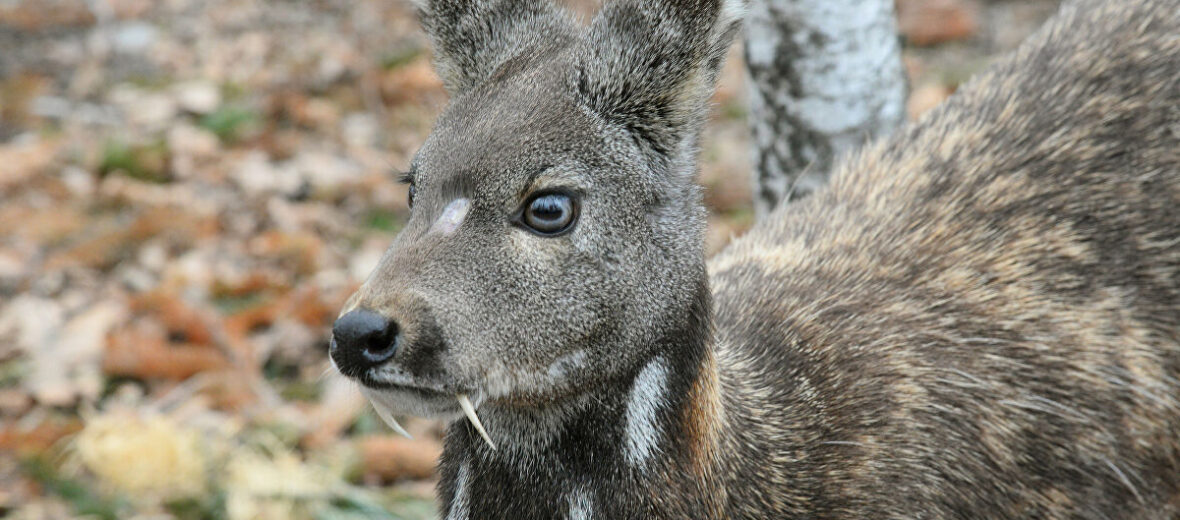
With a peculiar scent and sporting mini tusks, the Siberian musk deer is as strange as it is sought after, the world over. These critters are found in the mountain forests of Northeast Asia. They go by several names: Vampire kangaroo deer, Cerf Porte-musc, Porte-musc, Chevrotain Porte-musc, and Ciervo Almizclero. Due to habitat destruction and over hunting for their musk these deer are listed as Vulnerable by the IUCN.
First the Stats…
Scientific name: Moschus moschiferus
Weight: Up to 22 lbs.
Length: Up to 3 feet
Height: Up to 3 feet, at the shoulder
Lifespan: Up to 20 years
Now on to the Facts!
1.) Siberian musk deer are nocturnal (active at night).
2.) They are shy and solitary creatures found individually, in the case of males, or in groups or 2 – 3, in the case of a female with her offspring.
3.) These musk deer patrol an area of 1+ square mile and territories typically overlap with smaller and weaker males avoiding conflicts with larger males.
4.) Vampire deer communicate via urine and scent or musk marking, as well as via a soft hissing vocalization.
5.) Siberian deer like to graze on pine needles, leaves, buds, tree bark, young shoots, and lichens.
But wait, there’s more on the Siberian musk deer!
6.) Long, wide hooves help keep them from slipping and sinking into soft, wet soil and snow.
7.) Medicines and perfumes are made from the musk of these deer. Do to the high demand, their population has dwindled dramatically. In 1972, in Nepal, musk was once more valuable than gold!
Did you know…?
Their tusk-like canine teeth grow to around 3+ inches but never really stop growing.
8.) A single deer can eat up to 1.8 lbs. of lichens in a day!
9.) They have 4 stomachs that are used to process the hard to digest foods. They also chew their cud, just like cows.
10.) Females birth 1 – 2 fawns after an approximate 6 month gestation (pregnancy).
Now a Short Siberian Musk Deer Video!
Also, check out the Critter Science YouTube channel. Videos added frequently!
Want to suggest a critter for me to write about? Let me know here.



